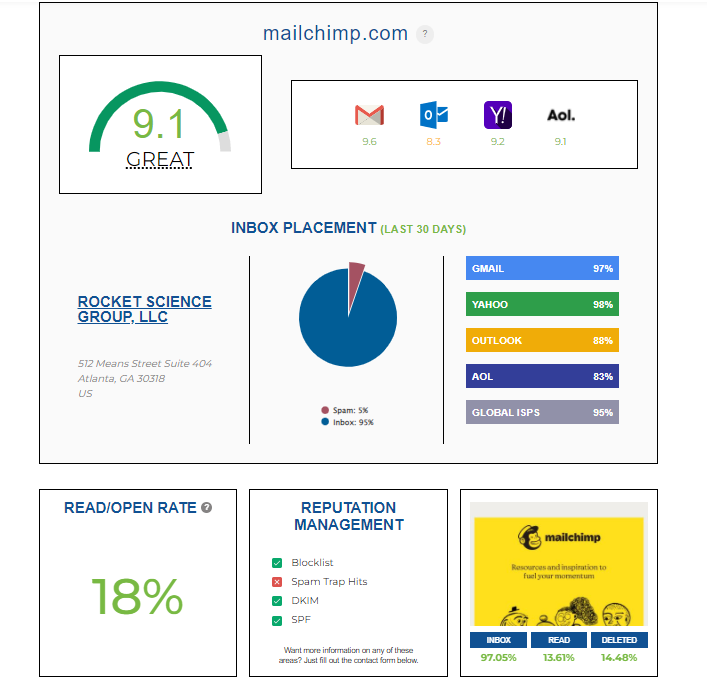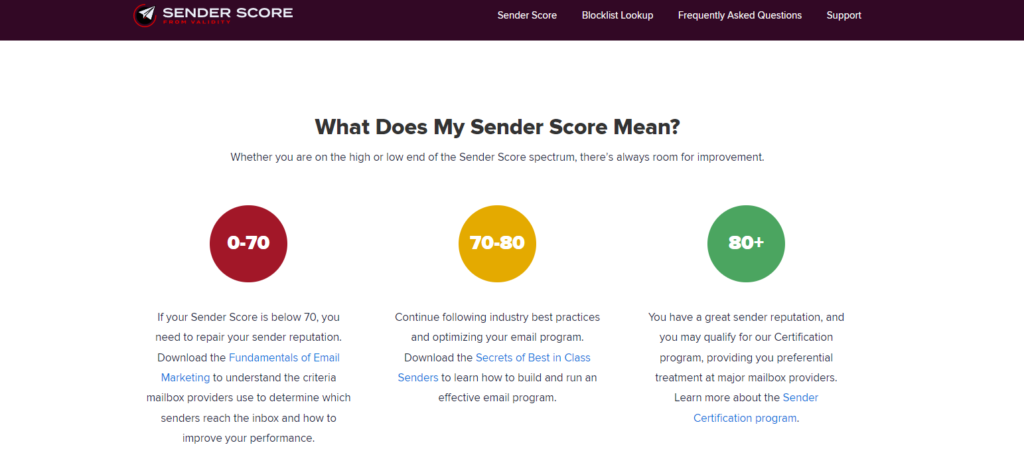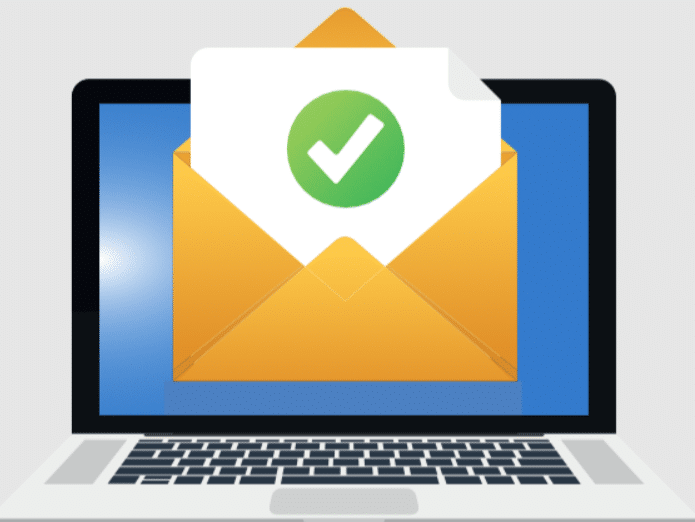Table of Contents – Email Deliverability
Definition of email deliverability
Email deliverability is an important aspect of any email marketing campaign. It refers to an email’s ability to reach its intended recipient’s inbox without being marked as spam, bouncing, or filtered out by email service providers.
Having a high email deliverability rate is very important for your email marketing campaigns to be successful. This means that your emails should be able to reach the people you want to send them to, without getting blocked or marked as spam. This is the main purpose of any email campaign. However, there are various things that can affect whether or not your emails are delivered successfully. It’s important to understand these factors so that you can take steps to improve your email campaigns and make them more effective.
Difference between email delivery and email deliverability
The terms “email delivery” and “email deliverability” refer to different aspects of email marketing.
Email delivery simply means that an email has been sent from the sender’s email server to the recipient’s email server. It does not take into account whether the email has been successfully delivered to the recipient’s inbox or not.
On the other hand, email deliverability refers to the ability of an email to successfully reach its intended recipient’s inbox without being marked as spam, bouncing, or filtered out by email service providers.
In other words, email delivery is about whether the email was sent, while email deliverability is about whether the email was actually delivered and received by the intended recipient. Email deliverability is a more important metric to track for email marketing campaigns, as it determines the campaign’s success by ensuring that the intended audience is actually seeing and engaging with the content of the email.
Learn email deliverability best practices
Importance of email deliverability in email marketing campaigns
Email deliverability is important for a few reasons. First, if your emails don’t reach your intended recipients, your email marketing campaign will be ineffective. Second, poor email deliverability can harm your sender’s reputation and make it more difficult to get your future emails delivered. Finally, email deliverability is critical for compliance with anti-spam laws and regulations.
The motive of email marketing is to reach emails to the recipient’s inbox. If instead of inbox, emails are received in the spam folder then no means of your effort. So, ensure your emails avoid the spam folder and this can achieve by following the best practices.
Factors that affect email deliverability
Sender reputation
This is the reputation of the sender’s email address and domain. It’s based on the sender’s history of sending emails and the recipient’s engagement with those emails. High engagement rates (e.g. opens and clicks) improve the sender’s reputation, while low engagement rates hurt it.
Content of the email
The content of your email can impact email deliverability. Spam filters look for specific phrases, words, and symbols that are common in spam emails. Avoid using spammy words like(Free, discount etc). Don’t use only images and too many links to your content
Quality of email list
The quality of your email list can also impact email deliverability. If your email list is outdated or contains invalid email addresses, it can hurt your sender’s reputation.
Email Authentication
Email authentication is the process of checking and verifying that an email is legitimate. Authentication protocols like SPF, DKIM, and DMARC help to ensure that your emails are not being sent from a crooked source.
Email Frequency
Sending too many emails to the same recipient can cause them to mark your emails as spam, which can hurt your sender’s reputation.
Email Service Provider
The email service provider you use can impact email deliverability. Some providers have better deliverability rates than others.
Email Engagement
The engagement level of your email recipients (e.g. opens, clicks, replies) is an important factor in email deliverability. High engagement rates can improve your sender’s reputation, while low engagement rates can hurt it.
How to improve email deliverability
To improve your email deliverability, there are several steps you can take.
Building a high-quality email list
First, build a high-quality email list by only sending emails to people who have given you permission to do so. Also, regularly clean your email list to remove invalid or inactive email addresses.
Using a reputable email service provider
Second, use a reputable email service provider that has a good reputation for deliverability and follows recommended sending practices.
Following email best practices
Third, follow email best practices, such as using a clear and concise subject line, avoiding trigger words, using a recognizable sender name and email address, and providing a clear and easy-to-find unsubscribe link.
Monitoring email-sending metrics
Finally, monitor your email sending metrics, such as the bounce rate, spam complaints, and engagement metrics, to identify areas for improvement.
To follow email deliverability best practices read the complete post
Tools for Email Deliverability Test – Free & Paid
Email delivery test
These tools check the health of email marketing. The status of your emails can check here to see whether they are landing inside your inbox or spam. How many emails are reaching the inbox and the percentage is landing in the spam/junk folder?
Just sending an email is not enough in email marketing. Purpose fulfils when emails are landing in the recipient’s inbox folder. If it is landing in the spam folder then what does it mean? Using the delivery index you will get to know where your emails are going to land.
There are several email deliverability tools available that can help you check your email deliverability and identify potential issues that might be impacting your email campaigns.
Sparkpost – Free Email Tester
This is a free tool no need to sign up or log in to check the delivery index. This will give you a score out of 10. The maximum score indicates your better performance. Check the below image where I have checked the email delivery score for Mailchimp which is too good. It will show the spam percentage, inbox percentage, open rate etc.

Sender Score – Check Email Sender Reputation
This is also a free tool but you need to log in to access the full report. This will give you a score between 0-100 identifying the quality of your sender’s reputation. Sender Score is a free email reputation evaluation service from Validity. To determine sender reputation lot of metrics take into consideration like spam complaints, email percentage to unknown users etc. The below image describes the score.

This is a free tool from Return Path that provides a score for your email reputation, which can be a good indicator of your deliverability rates.
GlockApps – Email Deliverability Tester
This is a paid tool that allows you to test your emails against different spam filters and email clients to see how they will be delivered and displayed to your recipients.
Email on Acid – Email Testing Platform
This is another paid email delivery tester tool that allows you to test your emails for deliverability and rendering issues across different devices and email clients.
MX Toolbox – Email Delivery Tester
This is a free tool that can help you identify if your email server is listed on any email blacklists, which can negatively impact your deliverability rates. You can do a lot using this tool like blacklist check, Dmarc check, DNS check, Email health and more.
Litmus – Email Testing Tool
This is a paid tool that allows you to test your emails across different email clients and devices and provides insights into how your emails are being delivered and displayed to your recipients. Litmus also provides extensions for chrome users.
By using these tools, you can gain valuable insights into how your emails are performing and identify any potential issues that might be impacting your deliverability rates.
Conclusion
In conclusion, email deliverability is a critical component of any email marketing campaign. By following best practices, building a high-quality email list, and monitoring your email-sending metrics, you can improve your email deliverability and ensure that your messages are being seen by your target audience. It’s important to keep in mind that email deliverability is an ongoing process, and you need to keep working on it to maintain a high deliverability rate.
You May Also Like
Email deliverability best practices
Email marketing step-by-step guide
What is snowshoe spamming
What are spam traps and how to avoid them for better deliverability
What is AB testing in email marketing? How it is responsible for more conversions
